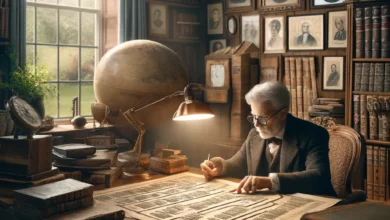The Taj Mahal’s Secret Chambers: A Journey Through its 5 Mysterious Doors
Nestled on the southern bank of the Yamuna River in Agra, India, the Taj Mahal stands as an epitome of love and an architectural marvel that has captured the imagination of people worldwide. Beyond its well-documented history and the love story between Shah Jahan and Mumtaz Mahal lies a realm shrouded in mystery, holding stories untold, secrets untapped. This narrative delves into the hidden history and secret chambers of the Taj Mahal, unraveling the enigmatic allure that has intrigued historians, architects, and travelers alike. As we journey through its five mysterious doors, we uncover the layers of its secret history, revealing a tapestry rich with culture, intrigue, and architectural genius.
Watch the video:
Door 1: The Secret Garden
Contrary to the meticulously planned Mughal gardens that surround the Taj Mahal, there exists a lesser-known, secluded garden. This hidden enclave, accessible through a small, inconspicuous door located on the eastern side of the complex, is rumored to have been a personal retreat for Shah Jahan. Unlike the symmetrical perfection of the outer gardens, this space is said to embody the chaos of nature, with wildflowers and untamed shrubs. It represents the emperor’s deep appreciation for the natural world, a facet of his personality that was as hidden as the garden itself.
Door 2: The Underground Chambers
Beneath the marble floors of the Taj Mahal lie several underground chambers, sealed shortly after the mausoleum’s completion. Legends suggest these chambers hold artifacts, treasures, and documents from Shah Jahan’s reign, deliberately concealed to protect them from invaders. Some speculate that these vaults might even contain the original plans of the Taj Mahal, offering insights into the architectural innovations that were centuries ahead of their time.
Door 3: The Secret Mosque
To the north of the Taj Mahal, hidden from the immediate view of visitors, is a small mosque that mirrors the design of the main structure but on a much smaller scale. This mosque, accessible through a narrow passage behind the main complex, was purportedly reserved for Shah Jahan and his immediate family. It provided a private space for prayer and reflection, away from the public eye, and is adorned with intricate calligraphy and tile work that rival the main mausoleum’s beauty.
Door 4: The Royal Chambers
Within the Taj Mahal, there exists a series of rooms known to few, referred to as the Royal Chambers. These chambers, rumored to be located on the upper floors of the mausoleum, were allegedly used by the royal family for private gatherings and to pay respects to Mumtaz Mahal in solitude. The existence of these rooms is heavily debated among historians, with some claiming they were sealed off after Shah Jahan’s time to preserve the sanctity of the space.
Door 5: The Hidden Observatory
The last of the mysterious doors leads to what was believed to be an observatory within the Taj Mahal’s complex. Shah Jahan had a known fascination with astronomy, and this secluded area, positioned towards the mausoleum’s western side, supposedly housed astronomical instruments. These tools were not only for the pursuit of knowledge but also served a practical purpose in aligning the Taj Mahal’s construction with celestial events, showcasing the blend of science and spirituality in Mughal architecture.
The Taj Mahal’s secret chambers and doors offer a glimpse into the complexities of the Mughal era, revealing a history that goes beyond the conventional narrative. Each door opens to a chapter that portrays the Taj Mahal not just as a monument of love, but as a testament to the multifaceted life of its creators, their interests, and their legacy. As much as these doors represent the physical gateways to the Taj Mahal’s hidden aspects, they also symbolize the endless quest for knowledge, urging us to look beyond the surface and explore the depths of history’s greatest mysteries.
